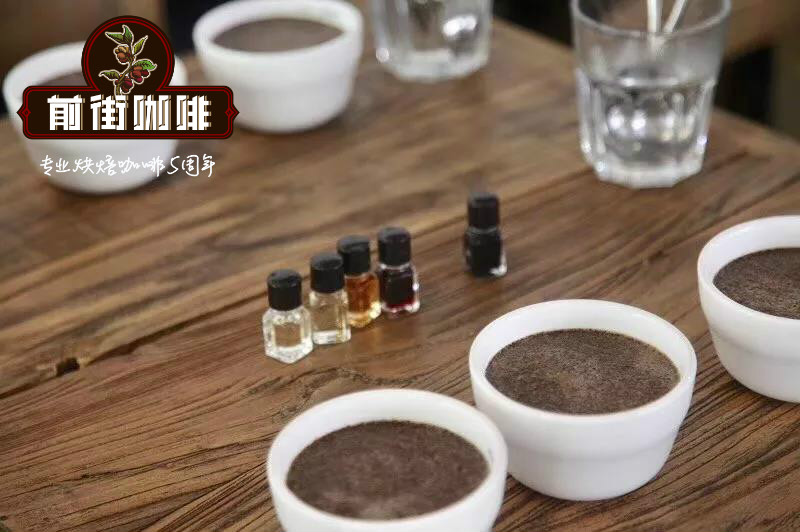Nicaraguan Yushi Coffee producing area introduces the story of Nicaraguan Yushi variety discovery

Professional coffee knowledge exchange more coffee bean information please follow the coffee workshop (Wechat official account cafe_style)
How did Abyssinia in Ethiopia spread to Congo and even Nicaragua?
WCR's report surprised Miguel Meza because Miguel himself, or anyone he knew or raw bean merchants, had never heard of the Congo-produced Ethiopian (Abyssinia) variety, and if so, when was it introduced to the Congo? He began to study the problem.
The name of today's "Republic of the Congo" has been changed many times. in colonial times, it was once called "Belgium Congo". It was a colony of Belgium and spoke French as well as French colonies. Miguel found a French book, Plantations de Caf é au Congo Belge, published in Brussels in 1936, which recorded exactly the existence of coffee varieties from Abyssinia in Congo.
On page 86, the book logs on to the list of Arabica beans introduced into Belgium and Congo. The first line lists the introduction of mocha varieties from Abyssinia (the old name of Ethiopia). At that time, all Ethiopian beans were generally referred to as moka beans. In addition, bourbon was introduced from Brazil, elephant beans, pointed bourbon from Bourbon island, and so on.
As for how Nicaragua Yushi, an Ethiopian variety, was introduced into Nicaragua, it is still an unsolved mystery.
However, Miguel found another clue that in May 1958, a disease-resistant variety was sent from the Congo Botanical Garden in Belgium to USDA in the United States as a reference variety to be extended to Central American producing countries. The final serial number of this variety in Costa Rica is T.3872. It goes without saying that this coffee is likely to be closely related to Abyssinia in the Congo. In order to fight leaf rust, CATIE promoted many Ethiopian varieties to Central American countries, including Nicaragua. However, many are not released commercially and are only grown in laboratories or on a few farms.
Yersi of Nicaragua can be said to be the newly discovered Ethiopian variety! But the discovery was entirely accidental.
Expocamo, a Nicaraguan raw bean exporter, has begun to move to more remote areas in the past two years, hoping to find the next boutique coffee, and the San Juan de Rio Coco region is one of them. At the end of 2016, Expocamo visited the local Finca El Zapote farm and drank a cherry coffee that resembled Tibica beans and found that the flavor was very different from that of Nicaragua, like ripe papaya.
Miguel Angel, a farmer in Zapot, told them that the tree, called Yersi, had been around when his father bought the farm and was planted by the Paguaga family of former farmers 40-50 years ago. Because the flavor is so special, Expocamo requires it to be dealt with separately when it is harvested. A few months later, Nicaragua Yossi showed an eye-catching performance on the cup table that he had never seen before. Very similar to the flower scent of Yega Xuefei, with a cup test score of 87 points and a farm of only 1000 meters above sea level, it is almost impossible to have such an outstanding performance, unless Yushi is not a common local Central American variety such as Kaddura and Kaduai.
On the day of the cup test, Expocamo immediately went to the farm to ask about the origin of the coffee. After Miguel Angel's father died, he inherited the Zapot farmland, and like most coffee farmers nearby, he changed all the coffee on the farm to Kaddura, which had a high yield, but kept Youxi, on the grounds that although the harvest was low, it was highly resistant to disease.
Important Notice :
前街咖啡 FrontStreet Coffee has moved to new addredd:
FrontStreet Coffee Address: 315,Donghua East Road,GuangZhou
Tel:020 38364473
- Prev

Where does Jamaican coffee produce Blue Mountain Jamaica Blue Mountain Coffee? why is it delicious and popular?
Professional coffee knowledge exchange more information about coffee beans Please follow the coffee workshop (Wechat official account cafe_style) the Blue Mountains in central Jamaica is an extraordinary sight. The higher reaches of the river are almost eternal fog, and the tropical sun gives it an otherworldly internal light, as if the light itself had fallen on the trees. The heavy fog slowed the development of coffee and produced more coffee than its
- Next

A brief introduction to the Chiapas Plateau of Mexico the characteristics of organic coffee in the Chiapas Plateau of Mexico
Professional coffee knowledge exchange more coffee bean information please follow the coffee workshop (Wechat official account cafe_style) country: Mexico Coffee production area: Chiapas Plateau Classification: Altura producer: OPCAAC Organic small Farmer production Organization treatment: traditional washing varieties: Kaddura (Caturra) altitude: 900m to 1100 m harvesting time: October to October each year
Related
- Does Rose Summer choose Blue, Green or Red? Detailed explanation of Rose Summer Coffee plots and Classification in Panamanian Jade Manor
- What is the difference between the origin, producing area, processing plant, cooperative and manor of coffee beans?
- How fine does the espresso powder fit? how to grind the espresso?
- Sca coffee roasting degree color card coffee roasting degree 8 roasting color values what do you mean?
- The practice of lattes: how to make lattes at home
- Introduction to Indonesian Fine Coffee beans-- Java Coffee producing area of Indonesian Arabica Coffee
- How much will the flavor of light and medium roasted rose summer be expressed? What baking level is rose summer suitable for?
- Introduction to the characteristics of washing, sun-drying or wet-planing coffee commonly used in Mantenin, Indonesia
- Price characteristics of Arabica Coffee Bean Starbucks introduction to Manning Coffee Bean Taste producing area Variety Manor
- What is the authentic Yega flavor? What are the flavor characteristics of the really excellent Yejasuffi coffee beans?

